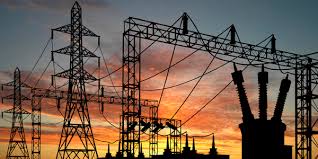Failing to generate required electricity during the years 2012, 2013 and 2014, public sector GENCOs have caused above Rs 35 billion heavy losses to country’s economy ostensibly because of the inefficiency of the ministry of water and power.
The National Electric Power Regulatory Authority has pointed out almost Rs 17 billion rupees losses to the national exchequer in a performance evaluation report (PER) of state-owned power generation plants (GENCOs). This PER is based on the quarterly reports submitted by the public sector GENCOs for years 2012, 2013 and 2014.
Sources in power sector are of the opinion that country’s economy has suffered almost Rs 18b loss due to failure of TPS Jamshoro (GENCO-I), TPS Guddu (GENCO-II) and TPS Muzaffargarh (GENCO-III) in generating required electricity during the three years. “GENCOs have caused heavy loss because the ministry remained indolent and did not take any measures to improve the power situation,” sources said.
NEPRA performance report said, “The data provided by GENCOs present a poor state of affairs at GENCO’s power stations which may include equipment deterioration, lack of scheduled & preventive maintenance, insufficient technical expertise and poor management. Therefore there is a need to improve the performance of GENCOs since they can contribute a significant share of the total energy demanded.”
The report also highlighted the performance of public sector GENCOs on the basis of parameters namely, auxiliary consumption, standby mode, availability factor, net capacity factor, net output factor, and energy availability factor.
According to NEPRA, the data provided by generation companies reflected that GENCO-I, II & III consumed excess auxiliary power over the allowed limit with an energy loss of around 777 mln/kwh during service mode, which translates into financial loss of about Rs 11.69 billion to the national exchequer. It is pertinent to mention here that TPS Muzaffargarh (GENCO-III) contributed almost half of this loss.
NEPRA’s report further detected that certain gas based power stations such as GTPS Kotri, GTPS Faisalabad and SPS Faisalabad remained on standby mode for the most part during the mentioned years; thereby, squandering the potential to generate a significant amount of economically efficient energy. On top of that, the units/machines of GENCO-I, II &III have drawn around 763 mln/kwh energy during standby mode under the head of auxiliary power consumption, resulting in financial loss of around Rs 6.04 billion to the national exchequer. Almost half of the energy consumption under standby mode was contributed by TPS Muzaffargarh.
Pointing out the violation committed by TPS Jamshoro (GENCO-I), TPS Guddu (GENCO-II) and TPS Muzaffargarh (GENCO-III) regarding the allowed limit of planned and unplanned outages as specified in their respective Power Purchase Agreements (PPAs) signed with the NTDC (National Transmission and Despatch Company), NEPRA said few units have violated the limit. Had this limit not been exceeded by aforementioned power stations, they could have been available for more amount of time for generating power, NEPRA argued.
About availability factor which is percentage amount of time when unit/machine remained available for generating power in a given time period, Performance Evaluation Report of GENCOs (I, II, III & IV) reflects that the availability factor, on average during the 3 years, remained very low for some of the power stations such as TPS Jamshoro, TPS Guddu and Lakhra power stations. The latter in particular showed the worst result and remained available only for 39pc during the period.
Similarly, Net Capacity Factor (NCF), which is the actual energy produced by a unit/machine during a particular period compared to its potential for power generation remained quite low mostly for the gas based power stations such as GTPS Kotri, GTPS Faisalabad and SPS Faisalabad implying that most of the time, these power stations remained on standby mode or planned/unplanned outage mode during the subject period, NEPRA observed.
NEPRA said Net Output Factor (NOF) which measures the reduction in power generation potential of a generating unit remained very low of some of the power stations of GENCOs, implying a lack of maintenance on part of the respective GENCOs. “This also shows the unreliability of power generation and unpredictability of GENCO’s power stations,” NEPRA said.
According to NEPRA, after reviewing the data, it had been noted that the EAF (Energy Availability Factor) is not equal in case of TPS Jamshoro, TPS Guddu and TPS Muzaffargarh, which showed that their net capacity was temporarily reduced due to equivalent planned & unplanned de-ratings during the reported period. Energy Availability Factor (EAF) measures the amount of time in which a unit/machine practically remained available.
The Performance Evaluation Report (PER) also indicated that RFO-based TPS Jamshoro and TPS Muzaffargarh remained the most expensive power stations among all public sector GENCOs as the CPPA-G procured energy from them at the unit rate of Rs 19.7 and Rs 19.1, respectively, On the contrary, gas-based GTPS Faisalabad and TPS Guddu were found the most cost-effective power stations as the CPPA-G purchased energy from these at the unit rate of Rs 5.3 and Rs 5.9, respectively.
This indicates that gas-based power stations contributed economical energy during 2012 to 2014 but their units were mostly put on a standby mode during the subject period, due to which the energy was procured by CPPA-G from the RFO-based expensive power stations at that time, NEPRA said.

























